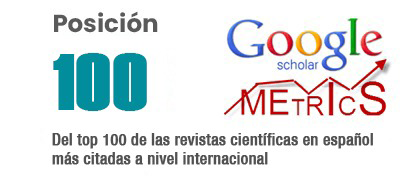Characterization in environmental culture of banana plantations in the province of El Oro
DOI:
https://doi.org/10.62452/zj8nef63Keywords:
Environment, humanity, banana plants, pollutionAbstract
The objective of this investigation is to characterize the environmental problems in the banana plantations of the Province of El Oro. The setting where the investigation was carried out is in the banana plantations of the Province of El Oro, classified as organic and conventional. Theoretical methods such as synthetic analytic and deductive inductive and empirical structured interview and survey have been used. The fundamental results are in the homogeneity that exists between the ages of the workers by sex, as well the similarities in the dimension associated with educational knowledge of the environment and the differences in those that belong to the dimension of harmful effects to the health. In conventional banana plants, plastic waste, in a high percent, is thrown in the garbage dumps. It can be concluded that the banana plantations of the Province of El Oro have been characterized in relation to the environmentalist culture that they possess, taking into account the classification made of them.
Downloads
References
Aliciardi, M. B. (2013). Gobernanza ambiental internacional. (Ponencia). VII Congreso Internacional de Derecho Ambiental. Buenos Aires, Argentina.
Arias, P., Dankers, C., Liu, P., & Pilkauskas, P. (2004). La Economía Mundial Del Banano 1985-2002. Food & Agriculture Org.
Arriols, E. (2019). Por qué se celebra el Día Mundial del Medio Ambiente. Ecología Verde.
Capa Benítez, L. B., Alaña Castillo, T. P., & Benítez Narváez, R. M. (2016). Importancia de la producción de banano orgánico: caso: provincia El Oro, Ecuador. Revista Universidad y Sociedad, 8(3), 64-71.
Capa-Benítez, L. B., Benítez Narváez, R. M., & Rojas Preciado, W. J (2017). Diagnóstico de las certificaciones obtenidas por fincas productoras de banano orgánico en la provincia El Oro. Revista Científica Agroecosistemas, 5(1), 78-85.
Cardona, A. (2019). Qué es el medio ambiente: definición y resumen. Ecología Verde.
Espinoza-Freire, E., Tinoco-Cuenca, N. P. (2015). La problemática ambiental resultante de la fumigación aérea con plaguicidas a bananeras de la provincia El Oro, Ecuador. Ciencia en su PC, 4, 75-87.
García, A. (1998). La contaminación acústica (Vol. 6). Universitat de València.
González, G. T. (1993). Hombre, hambre y contaminación del medio ambiente. Revista de la Facultad de Medicina, 41(1), 28-45.
Harari, R. (2009). Trabajo, Ambiente y Salud en la producción bananera del Ecuador. FAO. http://www.fao.org/fileadmin/templates/banana/documents/IFA_Trabajo_Medioambiente_Salud_Ecuador_Nov_09.pdf
León Serrano, L. (2017). La sostenibilidad ambiental en el sector productivo bananero del cantón Machala. Conference Proceedings, 1(1).
Londoño Motta, Á. M. (2016). Adopción potencial de alternativas biológicas por cultivadores de plátano del Quindío. (Tesis doctoral). Universidad Nacional de Colombia.
López, F. R., Calatayud, M. M., Peña, R. M., & PalmeroUrquiza, D. E. (2019). Fundamentos epistemológicos que sustentan una investigación en educación ambiental para el Desarrollo Local Sostenible, en la provincia de El Oro. Revista Conrado, 15(67), 282-287.
Portillo, S. R. (2020). Valores ambientales: qué son y ejemplos. Ecología Verde.
Sarandón, S. J., & Flores, C. C. (2014). Agroecología. Edulp.
Downloads
Published
Issue
Section
License
Copyright (c) 2020 María Belén Chica Guerrero, Raúl López Fernández, Rolando Medina Peña, Juan Carlos González Romero (Autor/a)

This work is licensed under a Creative Commons Attribution-NonCommercial-ShareAlike 4.0 International License.
Authors who publish in Revista Metropolitana de Ciencias Aplicadas (REMCA), agree to the following terms:
1. Copyright
Authors retain unrestricted copyright to their work. Authors grant the journal the right of first publication. To this end, they assign the journal non-exclusive exploitation rights (reproduction, distribution, public communication, and transformation). Authors may enter into additional agreements for the non-exclusive distribution of the version of the work published in the journal, provided that acknowledgment of its initial publication in this journal is given.
© The authors.
2. License
The articles are published in the journal under the Creative Commons Attribution-NonCommercial-ShareAlike 4.0 International License (CC BY-NC-SA 4.0). The terms can be found at: https://creativecommons.org/licenses/by-nc-sa/4.0/deed.en
This license allows:
- Sharing: Copying and redistributing the material in any medium or format.
- Adapting: Remixing, transforming, and building upon the material.
Under the following terms:
- Attribution: You must give appropriate credit, provide a link to the license, and indicate if any changes were made. You may do this in any reasonable manner, but not in any way that suggests the licensor endorses or sponsors your use.
- NonCommercial: You may not use the material for commercial purposes.
- ShareAlike: If you remix, transform, or build upon the material, you must distribute your creation under the same license as the original work.
There are no additional restrictions. You may not apply legal terms or technological measures that legally restrict others from doing anything the license permits.




